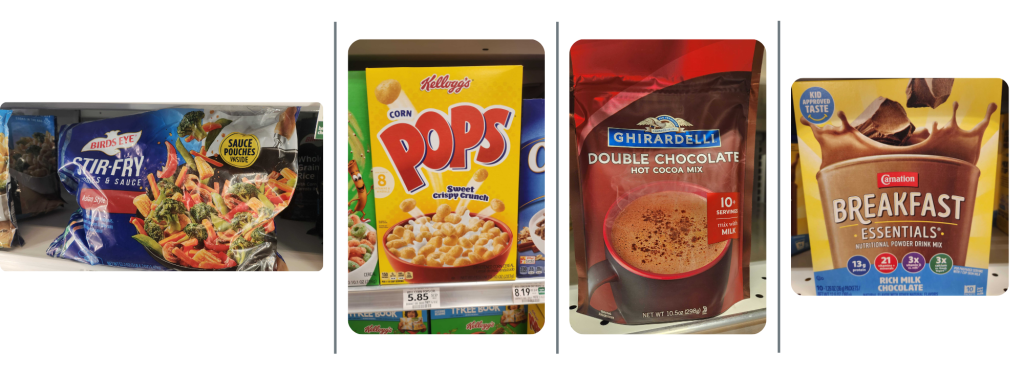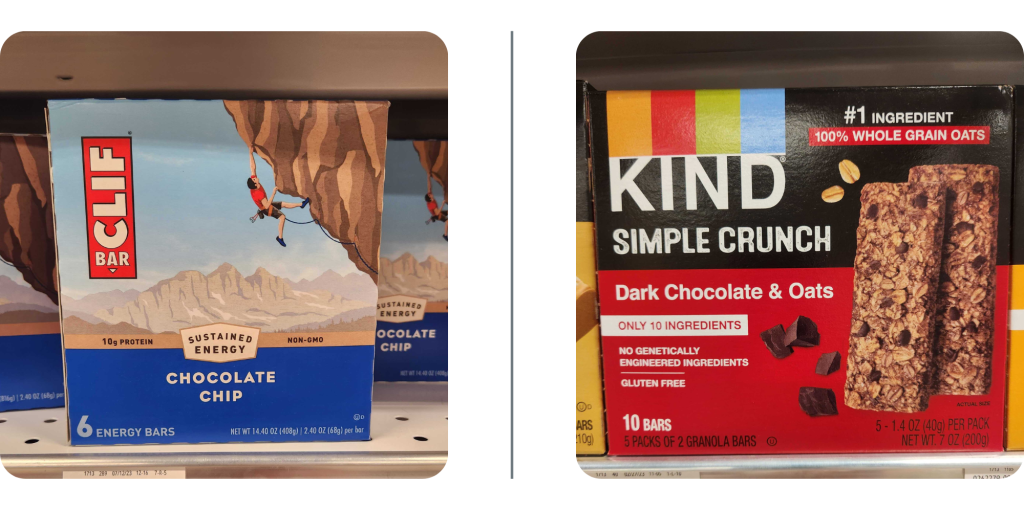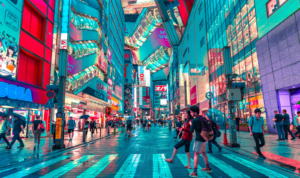Brand examples of neuroscience-backed packaging design principles that drive attention, communication, and ultimately purchase behavior.
You know good packaging design when you see it, right? Compelling info, attractive imagery, all with design elements that tie it together.
But what’s not as readily apparent is that effective design tenets are based on neuroscience-backed principles that drive attention, communication, and ultimately purchase behavior for your audience.
Designers can apply these durable cognitive principles — generally referred to as heuristics — to accelerate and elevate design in ways that link directly to real-world decision making (aka purchase behavior).
Let’s walk through examples of three key heuristics illustrated by examples of familiar packaged brands to bring these principles to life…
Design heuristic #1
Pacing: Use fast, then slow.

There’s an order to our attention: fast, then slow. Fast grabs attention and plants ideas at near subconscious speeds. Slow tells the story of the brand.
On pack, that fast (and first) attention space is on the left and upper left, and the slow (and last) attention space is on the right/lower right. In addition, the two brain hemispheres have different abilities:
- The Right hemisphere is better for Fast Communication (via imagery). We reach the right hemisphere via the left field of vision.
- The Left hemisphere is better for Slow Communication (via letter /words). We reach the left hemisphere via the right field of vision.
We need to work with the brain to communicate experiences on the left side of the pack, and ideas — via letters and words on the right.
For example, when looking at the California Pizza Kitchen package on the left, the brain sees verbal, descriptive information that tells the consumer what it is, i.e., a pizza with lots of ingredients.
However, the Digiorno pizza packaging on the right uses sensory-based imagery to communicate how the product will feel. The brain projects a cheesy, crunchy, chewy delicious experience. Then, in the slow space, it takes in the verbal details and reasons-to-believe for the product.
Design heuristic #2
Drive attention with perceived Motion.

Motion within imagery or graphics suggests unplanned or forced interactions. This increases psychological arousal, and therefore attention paid to that imagery.
Objects that are about to fall — such as stir-frying veggies — promote attention via care and precision. Similarly, objects coming at you, such as exploding cereal bits, heighten attention as they signal danger to the brain and therefore promote “good fear.” Even food cues of steam from hot cocoa or splashing liquid create attention-capturing “tension.
Design heuristic #3
Induce calm or provoke attention with color.

The neuroscientific study of color provides a simple yet in-depth framework for choosing the best colors for your design. This allows you to select your pack colors based on the intended effect.
The principles of color:
- Blue and red impact psychological arousal, where one is highly activated and reactive to stimuli.
- Yellow and black impact emotion.
- White is neutral.
- All other colors are combinations of these five primary influencers (blue, red, yellow, black, and white).
Blue lowers psychological arousal to induce a calm, reflective state. It communicates an idea to encourage a thoughtful purchase.
Conversely, red heightens psychological arousal to induce an impulsive state. It captures attention to spur an impulsive purchase.
Note the different “feels” to the two snack bar packages above.
Need to drive action via emotion?
- Yellow induces a positive mood and allows a product to be noticed quickly.
- Black induces “good fear” and reaches consumers via mystery and intrigue.
- White is neither positive nor negative. It diffuses the effect of other colors.
Julie Maines is Director of Data Empathy at Alpha-Diver, the market research & consulting firm that applies neuroscience to more deeply understand marketplace behavior. The firm’s neuroscientists and strategists work with leading brands, retailers and the Wall Street analyst community to explain consumer behavior in ways proven to help clients drive double-digit brand growth via activation.





